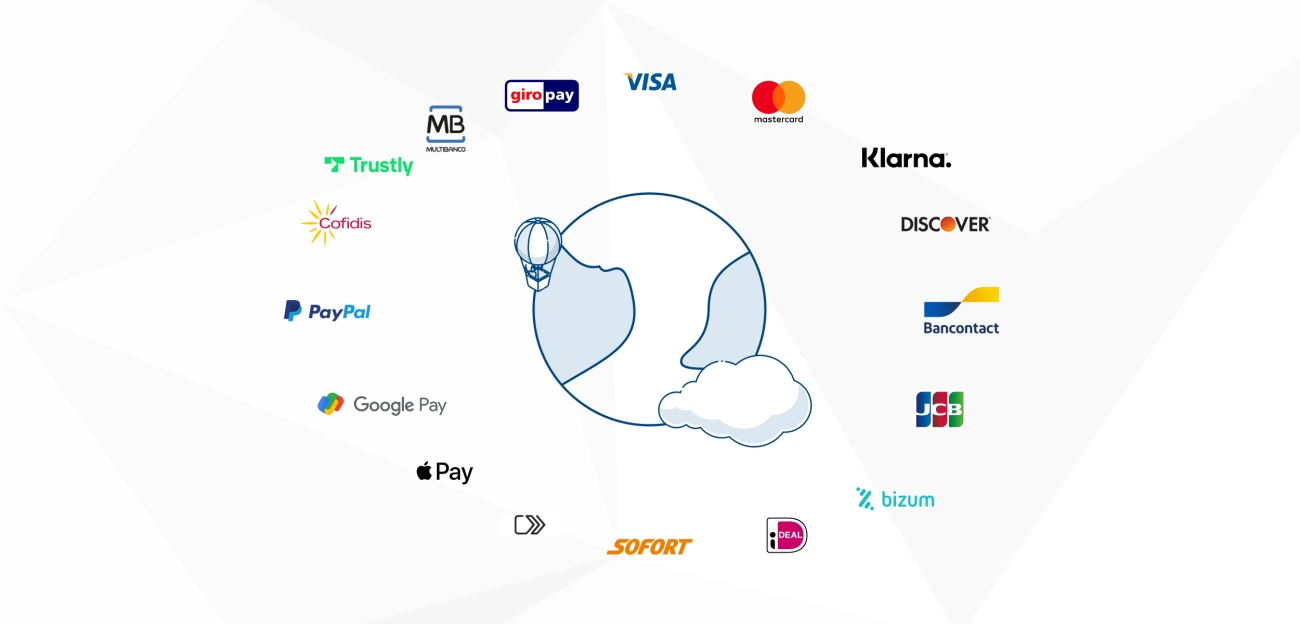cURL Too many subrequests.

If you’re expanding your business beyond borders, chances are you’ve hit a wall with POS systems and cross-border transactions. Payment failures, hidden fees, and complicated currency conversions can quickly turn a promising sale into a lost opportunity. But here’s the good news: modern POS solutions tailored for international sales are changing the game. In this guide, you’ll discover how to break through those common barriers and keep your global checkout smooth, secure, and profitable. Ready to turn your point-of-sale into a passport for worldwide growth? Let’s get started.
The Heart of the Issue Key Challenges in POS Systems for Cross Border Transactions

When expanding your retail business internationally, the système de point de vente (POS) is front and center in handling cross-border transactions smoothly. But the reality is, many POS setups stumble over complex challenges that can impact both customer experience and your bottom line.
Complex Currency Management and Real Time Conversion
One of the biggest hurdles is managing multi currency POS integration. Your system needs to handle real-time currency conversion rates accurately without slowing down transactions. If your POS can’t update exchange rates instantly, you risk charging customers incorrectly or losing money on unfavorable rates.
International Payment Processing Fees and Hidden Costs
Cross-border transactions often come with international payment processing fees that can quickly eat into profits. Many traditional POS systems don’t offer transparent fee breakdowns or tools to optimize payment routing. This creates a headache for retailers trying to balance cost efficiency with customer convenience.
Compliance with Global Retail Rules
Each country has unique tax regulations, reporting requirements, and data privacy laws. Without built-in global retail compliance tools, your POS system may fail audits or cause legal issues. Ensuring compliance takes continual updates and regional customization, which many standard POS systems lack.
Fraud Risks and Security Challenges
Cross border fraud prevention is another critical concern. International transactions open doors to attack vectors like card-not-present fraud or identity theft. POS systems must offer advanced security protocols, tokenization, and AI-driven fraud detection to protect both your store and customers.
Delivering Localized Checkout Experiences
Customers expect a checkout tailored to their locale. This means support for local payment methods such as alternative payment methods (APM) support for e-commerce, local languages, and culturally relevant interfaces. A generic POS interface can create abandonment at checkout, hurting sales and loyalty.
Handling Offline Transactions and Inventory Sync
Global retail often means dealing with unreliable internet connections. Without offline POS transaction handling capabilities, you risk losing sales during outages. Additionally, a scalable inventory sync system is essential for real-time stock updates across borders to prevent stockouts or overselling.
Addressing these challenges head-on requires a sophisticated, adaptable POS solution designed for global retail realities. What if your POS could simplify all of these complexities seamlessly? Next, we’ll explore what essential features make a POS system truly cross-border ready. Ready to rethink your POS strategy?
Essential Features What Makes a POS System Cross Border Ready

When dealing with cross border transactions, not all POS systems are built the same. To be truly cross border ready, a POS system must include several key features that make international selling smooth, secure, and efficient.
Multi Currency POS Integration
A must-have is multi currency POS integration. Your system should effortlessly handle multiple currencies at checkout, automatically converting prices using real time currency conversion rates. This reduces confusion for both you and your customers, ensuring accurate pricing no matter where the sale originates.
International Payment Processing and Fees Transparency
cURL Too many subrequests. international payment processing fees cURL Too many subrequests. cURL Too many subrequests.cURL Too many subrequests.
cURL Too many subrequests.
cURL Too many subrequests. global retail compliance tools cURL Too many subrequests.
cURL Too many subrequests.
cURL Too many subrequests. cURL Too many subrequests. cURL Too many subrequests.
cURL Too many subrequests.
cURL Too many subrequests. cURL Too many subrequests. cURL Too many subrequests.
cURL Too many subrequests.
cURL Too many subrequests. cURL Too many subrequests. cURL Too many subrequests.
Offline POS Transaction Handling
Internet interruptions happen, especially with international networks. A robust cross border ready POS supports offline POS transaction handling, allowing sales to continue even when connectivity drops. This ensures you never miss a sale regardless of local network reliability.
By focusing on these core features, a POS system can efficiently support your cross border transactions, helping you grow your presence in multiple international markets without unnecessary headaches.
How SDLPOS Cash Register POS Simplifies Cross Border Transactions
En ce qui concerne cross border transactions, SDLPOS Cash Register POS stands out by making the entire process smooth and efficient for U.S.-based retailers. Here’s how it tackles the toughest challenges:
Seamless Multi-Currency POS Integration
SDLPOS prend en charge real-time currency conversion rates, ensuring customers can pay in their local currency without any hassle. This feature eliminates confusion at checkout and reduces delays caused by currency mismatches, making every sale straightforward and transparent.
Lower International Payment Processing Fees
By partnering with multiple payment gateways that specialize in international payment processing, SDLPOS helps businesses avoid steep fees. This means better margins for retailers and more competitive pricing for customers across borders.
cURL Too many subrequests.
The system offers cURL Too many subrequests. that adjust to each customer’s preferences and local regulations. Whether it’s tax calculations, language support, or payment method options, SDLPOS makes it feel local, even when selling globally.
Robust Cross Border Fraud Prevention
Security is a big concern in international sales. SDLPOS integrates advanced fraud detection tools tailored for cURL Too many subrequests., minimizing chargebacks and protecting your business from risky transactions.
Offline POS Transaction Handling
Even if your internet connection drops, SDLPOS ensures sales don’t stop. Its offline POS transaction handling lets you continue accepting payments and syncs the data once you’re back online.
cURL Too many subrequests.
Managing inventory in multiple locations or countries can get tricky. SDLPOS features cURL Too many subrequests. so your stock levels update in real time, preventing overselling and keeping customers happy.
Support for Alternative Payment Methods (APM)
With support for popular and emerging APMs for e-commerce, SDLPOS makes international payments flexible, letting customers pay how they prefer—whether it’s digital wallets, bank transfers, or local payment options.
Blockchain Enabled Payments for Transparency
For businesses wanting to future-proof, SDLPOS offers integration with blockchain enabled payments, adding a layer of transparency and security for cross-border transactions.
In short, SDLPOS Cash Register POS is designed to simplify global retail by combining essential tools that address the unique needs of cross-border transactions. If you’re looking to expand your reach beyond the U.S., this POS system reduces complexity while boosting efficiency and security.
Implementation Roadmap for Cross Border POS Systems
Taking your POS system global involves more than flipping a switch. To handle the challenges of international payment processing fees, multi currency POS integration, and global retail compliance tools, here are 5 clear steps to simplify your cross-border journey with SDLPOS Cash Register POS.
Step 1 Evaluate Your Current POS Capabilities
Start by assessing if your current POS supports real-time currency conversion rates, localized checkout experiences, and offline POS transaction handling. Without these, you’ll face hurdles in providing smooth cross-border payments and accurate pricing in different currencies.
- Check if your POS can sync inventory across multiple regions (scalable inventory sync systems).
- cURL Too many subrequests.
cURL Too many subrequests.
cURL Too many subrequests.
- cURL Too many subrequests.
- cURL Too many subrequests.
- cURL Too many subrequests.
cURL Too many subrequests.
cURL Too many subrequests.
cURL Too many subrequests. global retail compliance tools cURL Too many subrequests.
- cURL Too many subrequests.
- cURL Too many subrequests.
cURL Too many subrequests.
cURL Too many subrequests.
cURL Too many subrequests.
- cURL Too many subrequests.
- cURL Too many subrequests.
- cURL Too many subrequests.
cURL Too many subrequests.
Step 5 Launch and Monitor for Improvements
Once you’re live, monitor your system closely. Use insights to:
- Track transaction success rates and identify payment issues.
- Adjust pricing or fees based on actual international payment processing feedback.
- Stay updated with blockchain enabled payments or emerging trends to future proof your system.
By following these steps, you can confidently expand your retail operations across borders with SDLPOS, providing a smooth, reliable, and scalable international sales experience.
Future Proofing Trends in POS and Cross Border Payments
As cross-border commerce grows, future-proofing your POS system is no longer optional—it’s essential. The landscape is evolving fast, and businesses need to stay ahead by adopting technologies and features that handle complexity without slowing you down. Here’s a look at key trends shaping the future of POS and cross-border payments.
Embracing Real Time Currency Conversion Rates
Cross-border buyers expect transparency with pricing. Real time currency conversion rates embedded in POS systems allow customers to see prices in their local currency, reducing confusion and abandoned carts. This feature helps minimize international payment processing fees by ensuring rates are accurate and updated instantly.
Integration of Multi Currency POS Support
A growing number of US retailers are leveraging multi currency POS integration to streamline global sales. This means handling multiple currencies at the checkout without delays, keeping the purchase flow smooth. It also simplifies accounting and reporting by syncing sales across currencies automatically.
Enhanced Cross Border Fraud Prevention
Fraud is a top concern when selling internationally. Advanced POS systems are now integrating cURL Too many subrequests. tools such as AI-powered risk detection and secure authentication layers. This reduces chargebacks and lost revenue, while protecting your customers’ data.
Support for Alternative Payment Methods (APMs)
Global shoppers use a wide range of payment types like digital wallets, local payment systems, and buy-now-pay-later options. Future-ready POS systems support various APM options for e commerce, offering localized checkout experiences that increase conversion rates and customer satisfaction.
Offline POS Transaction Handling for Reliability
Reliability is key when serving customers around the clock and across borders. Smart POS solutions include offline POS transaction handling, allowing transactions to proceed even without internet access. This keeps sales flowing and inventory synced until connection is restored.
Scalable Inventory Sync Systems Across Borders
Inventory management becomes complex when operating internationally. Future POS platforms feature cURL Too many subrequests. that update stock levels in real time across various locations and countries. This prevents overselling and supports better demand forecasting.
Blockchain Enabled Payments for Transparency and Security
Blockchain technology is emerging as a game changer in cross-border payments. Blockchain-enabled POS solutions promise faster settlements, lower fees, and enhanced transparency. For US businesses looking to scale globally, tapping into blockchain enabled payments can streamline international transactions and build trust.
Getting ahead means investing in a POS system designed to grow with your business and adapt to shifting global retail dynamics. Staying on top of these trends ensures your cross-border transactions remain smooth, secure, and cost-effective over time.
